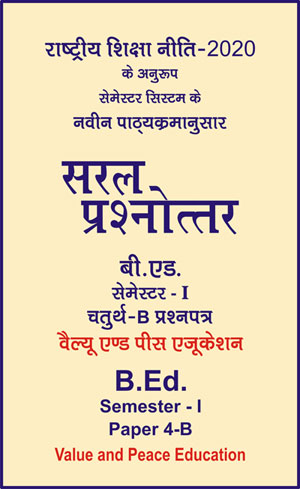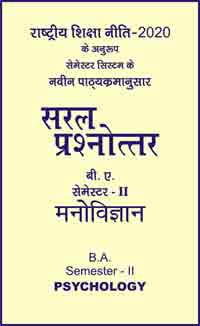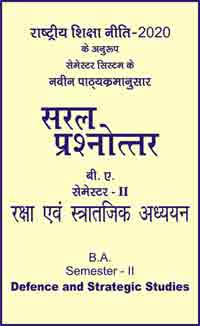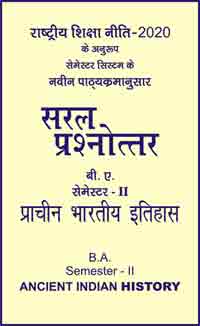|
बी एड - एम एड >> बी.एड. सेमेस्टर-1 प्रश्नपत्र-IV-B - वैल्यू एण्ड पीस एजुकेशन बी.एड. सेमेस्टर-1 प्रश्नपत्र-IV-B - वैल्यू एण्ड पीस एजुकेशनसरल प्रश्नोत्तर समूह
|
5 पाठक हैं |
||||||
बी.एड. सेमेस्टर-1 प्रश्नपत्र-IV-B - वैल्यू एण्ड पीस एजुकेशन (अंग्रेजी भाषा में)
Question- Give the importance of Family Structure in details.
Answer -
Definition
Family structure refers to the combination of relatives that comprise a family. Classification on this variable considers the presence or absence of: legally married spouses or common law partners; children; and, in the case of economic families, other relatives.
Economic family refers to a group of two or more persons who live in the same dwelling and are related to each other by blood, marriage, common-law or adoption. A couple may be of opposite or same sex. Foster children are included. By definition, all persons who are members of a census family are also members of an economic family. Examples of the broader concept of economic family include the following: two co-resident census families who are related to one another are considered one economic family; co-resident siblings who are not members of a census family are considered as one economic family; and, nieces or nephews living with aunts or uncles are considered one economic family.
Family Structure and Importance
Indian society is collectivistic and promotes social cohesion and interdependence. The traditional Indian joint family, which follows the same principles of collectivism, has proved itself to be an excellent resource for the care of the mentally ill. However, the society is changing with one of the most significant alterations being the disintegration of the joint family and the rise of nuclear and extended family system. Although even in today’s changed scenario, the family forms a resource for mental health that the country cannot neglect, yet utilization of family in management of mental disorders is minimal. Family focused psychotherapeutic interventions might be the right tool for greater involvement of families in management of their mentally ill and it may pave the path for a deeper community focused treatment in mental disorders. This paper elaborates the features of Indian family systems in the light of the Asian collectivistic culture that are pertinent in psychotherapy. Authors evaluate the scope and effectiveness of family focused psychotherapy for mental disorders in India, and debate the issues and concerns faced in the practice of family therapy in India.
Role of Culture and Collectivism in Shaping the Family
Families do not exist in isolation and family dynamics are often best interpreted in the context of their societal and cultural background. Culture has been shown to determine the family structure by shaping the family type, size, and form and the family functioning by delineating boundaries, rules for interaction, communication patterns, acceptable practices, discipline and hierarchy in the family. The roles of family members are determined largely by cultural factors (as well as stages of the family life cycle), and finally, culture also explains families’ ways of defining problems and solving them.
Culture, however, is not an external passive influence on the families but families themselves serve as the primary agent for transferring these cultural values to their members. Parents help children to learn, internalize, and develop understanding of culture through both covert and overt meAnswer Family members modify behaviors in themselves and others by principles of social learning. In this process, the general norms and beliefs may be modified to suit the needs of the family creating a set of “family values”, a subset of societal norms unique to the family.
It is imperative then, that therapists understand the impact of culture on family functioning as well as in conflict resolution and problem-solving skills of the family members. One such important dimension of Asian and particularly Indian culture that affects family functioning is collectivism. “Collectivism” refers to the philosophic, economic, or social outlook that emphasizes the interdependence amongst human beings. It is the basic cultural element for cohesion within social groups, which stresses on the priority of group goals over individual goals in contrast to “individualism”, which emphasizes on what makes the individual distinct, and promotes engagement in competitive tasks. “Horizontal collectivism” refers to the system of collective decision-making by relatively equal individuals, for example, by the intra-generational family member; while “vertical collectivism” refers to hierarchical structures of power in a collectivistic family, for example, inter-generational relations in a three-generation family.
Classically, the cultures of Western Europe and North America with their complex, stratified societies, where independence and differences are emphasized, are said to be individualistic, whereas in Asia, Africa, parts of Europe and Latin America were agreeing on social norms is important and jobs are interdependent, collectivism is thought to be preponderant. Studies comparing Caucasians or Americans with people from Asian cultures, such as Vietnamese or Filipino do show that individualistic societies value self-reliance, independence, autonomy and personal achievement, and a definition of self apart from the group. On the other hand, collectivistic societies value family cohesion, cooperation, solidarity, and conformity.
Such cultural differences mean that people in different cultures have fundamentally different constructs of the self and others. For more collectivistic societies like ours, the self is defined relative to others, is concerned with belongingness, dependency, empathy, and reciprocity, and is focused on small, selective in-groups at the expense of out-groups. Relationships with others are emphasized, while personal autonomy, space and privacy are considered secondary. Application of western psychotherapy, primarily focused on dynamic models, ego structure and individuals, therefore, becomes difficult in the Indian collectivistic context. The point has been well discussed by Indian psychiatrists in the past. As early as in 1982, Varma expressed limitations to the applicability of the Western type of psychotherapy in India, and cited dependence/interdependence (a marker of collectivism) in Indian patients with other family members as foremost of the seven difficulties in carrying out dynamic and individual oriented psychotherapy. Surya and Jayaram have also pointed out that the Indian patients are more dependent than their western counterparts. Neki, while discussing the concepts of confidentiality and privacy in the Indian context opined that these terms do not even exist in Indian socio-cultural setting, as the privacy can isolate people in interdependent society. Neki recommended a middle ground with family therapy or at least couple of sessions with the family members along with dyadic therapy in order to help the progress of the psychotherapy. Family, therefore, forms an important focus for change in collectivistic societies, and understanding the Indian family becomes an essential prerequisite for involving them in therapy.
|
|||||













